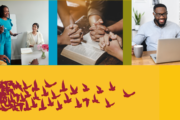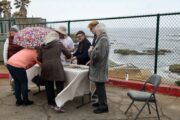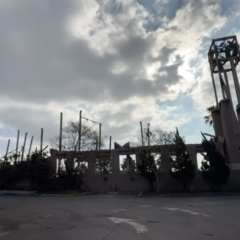(Photo by Joanne DiBona)
The Coachella Valley communities of Palm Springs, Rancho Mirage, Indian Wells, Cathedral City and Indio share a legacy as retreat centers for the rich and famous, spiritual seekers, recovering alcoholics and drug addicts, retirees and snow birds. With over 2,000 people coming to the broad desert valley each month for some kind of “treatment,” Coachella has become an epicenter for the wellness and recovery industry, dealing with a wide variety of issues such as alcohol and drug addiction, chronic pain, HIV/AIDS, cancer, exhaustion and depression.
Recovery has become a highly competitive business. Thus conventional programs in the Coachella Valley often include complementary spiritual practices like mindfulness training, yoga, equestrian therapy, adventure therapy, drumming, Zen meditation, massage therapy, Qi Gong and pet therapy.
While these are each legitimate spiritual practices, it is important to ask whether they truly support 12-Step spirituality and, if so, how they can be integrated into a lifelong spiritual program. These questions are closely connected to the evolution of Alcoholics Anonymous since AA’s founding in 1935. We might think of AA as having three “recovery” operating systems. In Recovery 1.0 (1935-1950) AA rolled out its “Basics” for a spiritual program: the disease concept of alcoholism, the alcoholic-to-alcoholic therapeutic practice, the 12 Steps and the Big Book (1939), AA meetings, the practice of having an AA sponsor and the 12 Traditions (1950). In this early period members were generally white, Christian men living in homogeneous communities.
Over the course of Recovery 2.0 (1951-2000) AA’s basic spiritual program expanded to include a more diverse array of people who were dealing with addictive and compulsive behaviors in America’s post-World War II culture. Recovery 2.0 saw the basics of AA evolve into a broader spiritual recovery movement. The first new group, Al-Anon, was founded in 1951 by Lois W. and Anne B., the wives of AA’s founders. Al-Anon addressed the needs of family members of alcoholics who were dealing with co-dependent compulsive behaviors that enabled the alcoholic’s addictive behaviors.
Narcotics Anonymous was founded in 1953 as another outgrowth of AA in recognition of the need for those addicted to drugs to have a separate organization to respond to their unique experiences. A third group, Alateen, was founded in 1957 to help the teenage children of alcoholics. Other groups adapted the 12-Step model to meet their particular needs: Gamblers Anonymous (1957), Overeaters Anonymous (1960), Sex Addicts Anonymous (1977), Sexaholics Anonymous (1979), Co-Dependents Anonymous (1986) and Crystal Meth Anonymous (1994).
Today there are about 50 different 12-Step groups in the U.S. And within AA itself there are specialized groups and meetings based on language, gender, ethnicity, age and sexual orientation. During this period the Basics were emphasized by all of the 12-Step groups. There was a common understanding of what it meant to be “working the program”: Do the Steps, have a Higher Power, get a sponsor, attend meetings, read the literature, work with newcomers. To many outsiders these groups looked like religious organizations, particularly in the rigid way “the program” was transmitted and revered.
Recovery 3.0 (2001 to present) has involved the adaptation of 1.0 Basics and 2.0 Spiritual Recovery to new medical, psychiatric, psychological and behavioral models that also deal with addiction and other compulsive behaviors. Recovery 3.0 is in some ways a reaction to the perceived rigidity of “the program” and asks the following questions: Does the 12-Step model provide enough support for long-term recovery? How do new recovery models relate to 1.0 and 2.0? Can the spiritual aspects of 1.0 and 2.0 be integrated into new recovery modalitites?
These questions frequently arise in treatment programs based in the Coachella Valley. This diverse spiritual environment has created the context for Recovery 3.0 and has often challenged the effectiveness of traditional 1.0 and 2.0 programs. Moreover, alternatives to the 12-Step model can be very attractive to busy people who do not wish devote their free time to the demands of the Basics or to those who are fundamentally opposed to participating in anything that triggers an association with organized religion.
The idea of Recovery 3.0 is to analyze the state of recovery programs today and discover best practices and interventions from the newer models for recovery that can be integrated with 1.0 Basics and 2.0 Spiritual Recovery. The task is to create accountable integrative evidence-based programs that are at once sensible and spiritual, what my colleagues and I are calling sensible spirituality for the 21st century.
Joseph Palacios is a guest contributor with the USC Center for Religion and Civic Culture.








